Centennial Hall, why is it worth visiting?
The Centennial Hall is an extraordinary place and a world-class monument. The Centennial Hall has been inscribed on the UNESCO World Heritage List due to the unconventional architectural solutions used during the construction. The Centennial Hall attracts tourists not only because of its unique character, but also delights with its beauty. Behind the hall building, there is a picturesque pergola with a wonderful multimedia fountain. (Similar fountains are in Prague, Warsaw and Berlin)
The Centennial Hall was designed by Max Berg – the famous architect. The construction lasted from 1911 to 1913, and after the completion of the project, a huge exhibition was created inside to celebrate the 100th anniversary of the defeat of Napoleon at Leipzig. The area around the hall is designated for exhibition and recreation areas. The developing city needed a large, distinctive structure, able to accommodate a large number of exhibitors and visitors.
Access to the Centennial Hall in Wrocław
There is a paid parking lot near the Centennial Hall. You can enter there from the tourism center. However, the parking lot is extremely expensive, it costs 6,5 PLN / h. Therefore, we recommend using other forms of transport!
Centennial Hall - Sightseeing and Tickets
To visit the Centennial Hall you do not need to buy a ticket, it is widely available to every tourist. However, there are other additional paid attractions nearby, such as the entrance to the terrace from which you can watch the fountain show, as well as fairs and performances, which sometimes take place inside the hall or in the nearby regional tourism center.
Calendar of exhibitions and shows
The Centennial Hall has been planned since its inception as a venue for mass and cultural events, as well as concerts and fairs. It is therefore not surprising that various events take place there several times a year. During this time, entry to the hall, understood as participation in the organized event, is ticketed. Dates of events and ticket prices can be checked on the website of the Centennial Hall!
Hala Stulecia - How was it built?
The establishment of the hall, the most famous work of Wrocław modernism, was associated with the hundredth anniversary of the publication in Wrocław by Frederick William III of the proclamation of March 17, 1813, calling for general resistance against Napoleon. It was decided to celebrate this ceremony with exceptional panache and class, for this purpose a world exhibition was organized to commemorate these events. For this purpose, the city set aside areas located on the edge of the Szczytnicki Park, near the Wrocław Zoological Garden, established some 40 years earlier and enjoying increasing popularity.
Out of 43 submitted projects, the design of the city architect of Wrocław, Max Berg, was approved, who proposed a large exhibition hall with an unprecedented structure. Despite the original, but very controversial design of the hall and the high estimated costs of its construction, on June 28, 1911, it obtained a formal building permit.
At the time of its construction, the hall was a unique facility, with a reinforced concrete cover with the largest span in the world – only a few steel structures were larger then. The hall is 42 meters high and the dome that covers it is 67 meters in diameter. The maximum width of the hall’s interior is 95 meters, and the available space is 14,000 sq m. m². In addition to the central hall itself, 56 other exhibition rooms were planned in the building, spacious lobbies surrounding the main hall, and the total was calculated for 10,000 people.
Centennial Hall in Wrocław - UNESCO Monument
In 2006, the Centennial Hall was inscribed on the UNESCO World Heritage List, which is a unique expression of recognition for this place. UNESCO (United Nations Educational, Scientific and Cultural Organization) – the United Nations Educational, Scientific and Cultural Organization was founded on November 16, 1945. This organization was established to protect the world’s top-class monuments or unique natural creations. The sites inscribed on the UNESCO list are monuments unique to all mankind that deserve special protection.
The history of an unusual place
The history of the Centennial Hall is inseparably connected with the history of Wrocław and the entire region. Particularly important events and celebrations took place there, which had an impact on the present character of the city.
The hall survived World War II without any serious losses. The exhibition grounds around the hall and the hall itself for the first time after the war were used on a larger scale from July to September 1948 at the Recovered Territories Exhibition and during the accompanying (August 25-28) World Congress of Intellectuals in Defense of Peace.
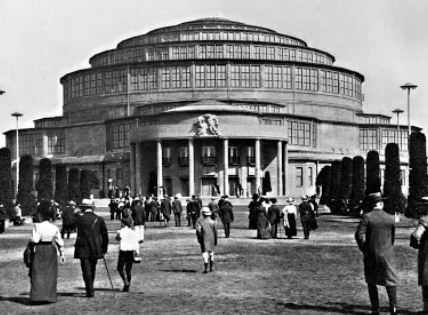
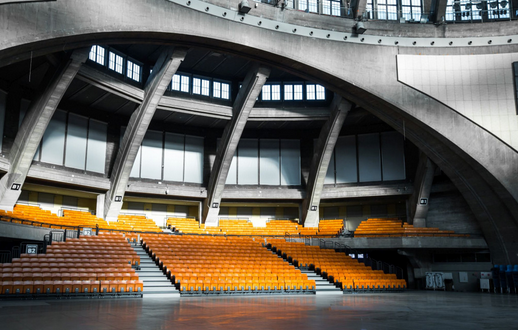
The dynamically conducted construction of the Centennial Hall was a great technological undertaking, an example of the highest engineering efficiency and craftsmanship. The applied bold design and organizational solutions became a model for other buildings of this type.
Centennial Hall - Dark Times of the People's Republic of Poland
In the People’s Republic of Poland, no major works were carried out in the hall that would significantly change its character. It served as a venue for concerts and sports events, and the largest cinema in the city also operated in the hall. Only the urban context of the hall changed quite strongly due to the cutting off of the southern part of the exhibition grounds. in 1948 the Spire was built on the square in front of the entrance.
The 90s and the present day
After 1989, some changes were made in the hall, a general renovation lasting several months there in 1997 included such changes as plastic window blinds, advertising boards, sound system, and above all lowering the floor level by about 1 m and building in sliding stands and folding pitches (allows changing the purpose of the hall depending on the current sports or exhibition needs.On May 31, 1997, during his sixth visit to Poland, John Paul II led an ecumenical prayer in the hall as part of the Eucharistic congress.
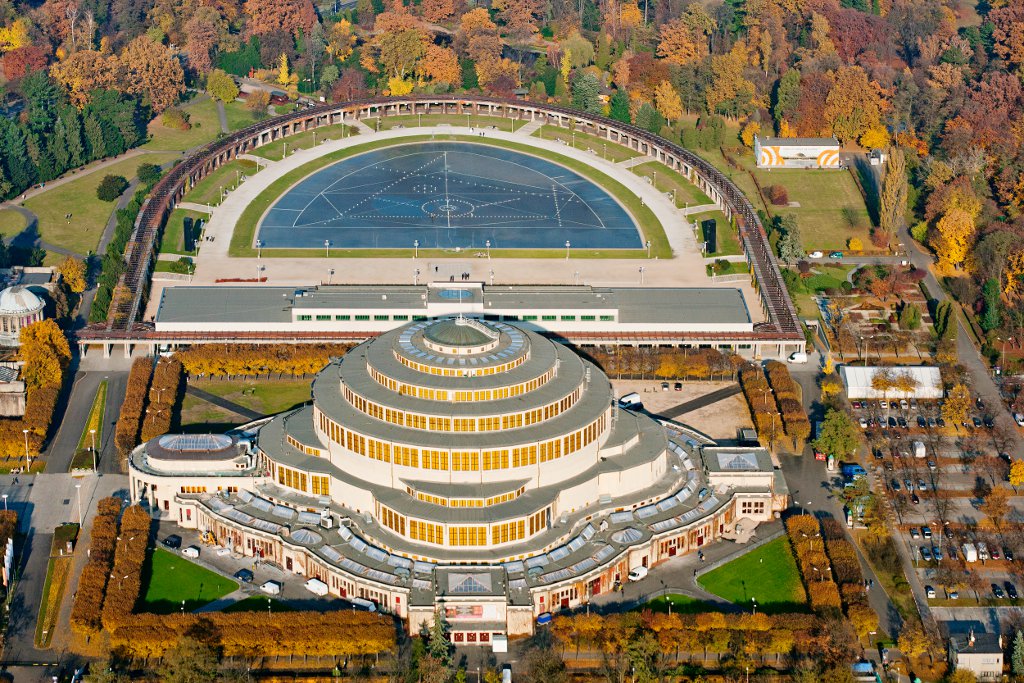
Last renovation
The renovation of the Centennial Hall was carried out in 2009-2011
The elevation regained its pre-war yellow and sand color. The biggest problem was the replacement of windows. Max Berg in his design used iron mahogany imported especially from Australia. Today, this tree species does not exist, so at the request of the conservator, teak wood was used. This resulted in an increase in renovation costs and an extension of the repair time.
Centennial Hall and Regional Center of Business Tourism
The next stage was the construction of a new Regional Business Tourism Center. The construction in the historic site was possible thanks to the preserved and unrealized expansion plans by Max Berg. The official opening took place on September 17, 2010. The last planned stage was the renovation of the facade inside the building. It was also planned to increase the capacity of the hall for the needs of the audience during sports competitions
In 2014, the volleyball championship was held here.
Despite numerous historical turmoil, the hall has not changed its original character.
The Wrocław Fountain is the largest in Poland and one of the largest in Europe. Its ceremonial opening took place on June 4, 2009, on the occasion of the twentieth anniversary of the first free elections in post-war Poland. Situated in the picturesque landscape of the Szczytnicki Park, next to the historic Hala Stulecia complex and the Wrocław Congress Center, it attracts the attention of tourists from Poland and abroad. It covers an area of almost 1 ha, and at its bottom there are as many as 800 light points, 300 water nozzles and 3 fire nozzles.
Watching the Fountain Show
The shows between 19 and 21 are most popular due to the upcoming evening. The splash of water, music and the glow of lights shimmering in the glass during the setting sun give the visitors an unforgettable experience. We encourage everyone to watch such a show.
Harmonogram Pokazów
muzyka nowoczesna / 4:14 min / Bonobo: Kiara, Prelude The Cinematic Orchestra: Arrival of the Birds
muzyka klasyczna / 16:26 min / Georges Bizet: Carmen; uwertura Ludwig van Beethoven: V symfonia w C minor; Chaczaturian Aram: Taniec z szablami (z baletu „Gajane”); Piotr Czajkowski: suita z baletu „Dziadek do orzechów”
muzyka pop / 10 min / Daft Punk: Around the World; Amerie: Thing; Madonna: 4 Minutes; Beyonce: Run the World; M.I.A.: Bad Girls; Azealia Banks: 212; James Brown: I feel good; Kaoma: Lambada; Katy B: Katy on the Mission
muzyka nowoczesna / 4:14 min / Bonobo: Kiara, Prelude The Cinematic Orchestra: Arrival of the Birds
muzyka nowoczesna / 4:14 min / Bonobo: Kiara, Prelude The Cinematic Orchestra: Arrival of the Birds
muzyka klasyczna /10:38 min / Hans Zimmer: Dead Man’s Chest (utwór z filmu „Piraci z Karaibów”); Sergei Prokofiev: Montagues And Capulets („Romeo i Julia”); Wolfgang Amadeus Mozart: uwertura z „Wesela Figara”
muzyka pop /10 min / Daft Punk: Around the World; Amerie: Thing; Madonna: 4 Minutes; Beyonce: Run the World; M.I.A.: Bad Girls; Azealia Banks: 212; James Brown: I feel good; Kaoma: Lambada; Katy B: Katy on the Mission
muzyka nowoczesna 17:07 min / Apocalyptica: Quutamo; Faith No More: Midnight Cowboy; Jean Michel Jarre: Oxygène, cz. 8 Vangelis: Pulstar
muzyka klasyczna / 4:57 min / Ryszard Wagner: Cwał Walkiri z opery „Die Walküre”
muzyka klasyczna / 16:26 min / Georges Bizet: Carmen; uwertura Ludwig van Beethoven: V symfonia w C minor; Chaczaturian Aram: Taniec z szablami (z baletu „Gajane”); Piotr Czajkowski: suita z baletu „Dziadek do orzechów”
muzyka pop / 10 min / Daft Punk: Around the World; Amerie: Thing; Madonna: 4 Minutes; Beyonce: Run the World; M.I.A.: Bad Girls; Azealia Banks: 212; James Brown: I feel good; Kaoma: Lambada; Katy B: Katy on the Mission
Few people remember that the Centennial Hall was inscribed on the UNESCO World Heritage List along with the adjacent buildings, which are not inferior to their innovative architectural solutions. One of them is the Four Domes Pavilion.
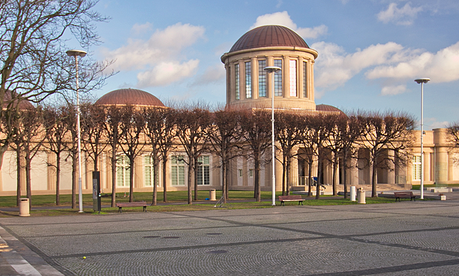
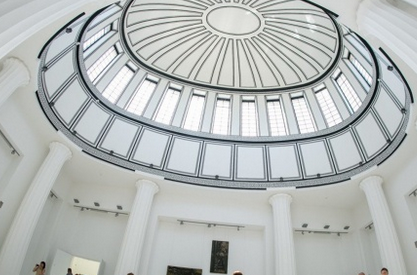
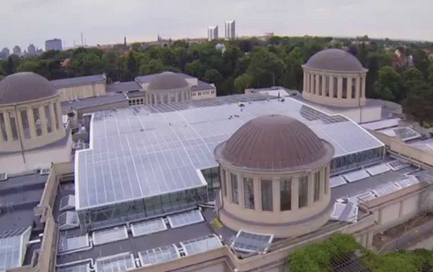
Four Domes Pavilion - a branch of the National Museum
The Pavilion hosts an exhibition of Polish contemporary art. The collection includes about 20 thousand. exhibits in the field of painting, graphics, sculpture, photography and others. In addition to the works of such outstanding artists as Władysław Hasior, Tadeusz Kantor or Katarzyna Kozyra, visitors can admire the works of the artistic milieu in Wrocław.
Other attractions nearby
In the vicinity of the Centennial Hall there are many other well-known and recognized attractions of Wrocław. When visiting this place, it is also worth visiting other among the best ones are “
- ZOO Wrocław
- Afrykarium we Wrocławiu
- Park Szczytnicki
- Fontanna Multimedialna
- Ogród Japoński

Add comment / Dodaj komentarz